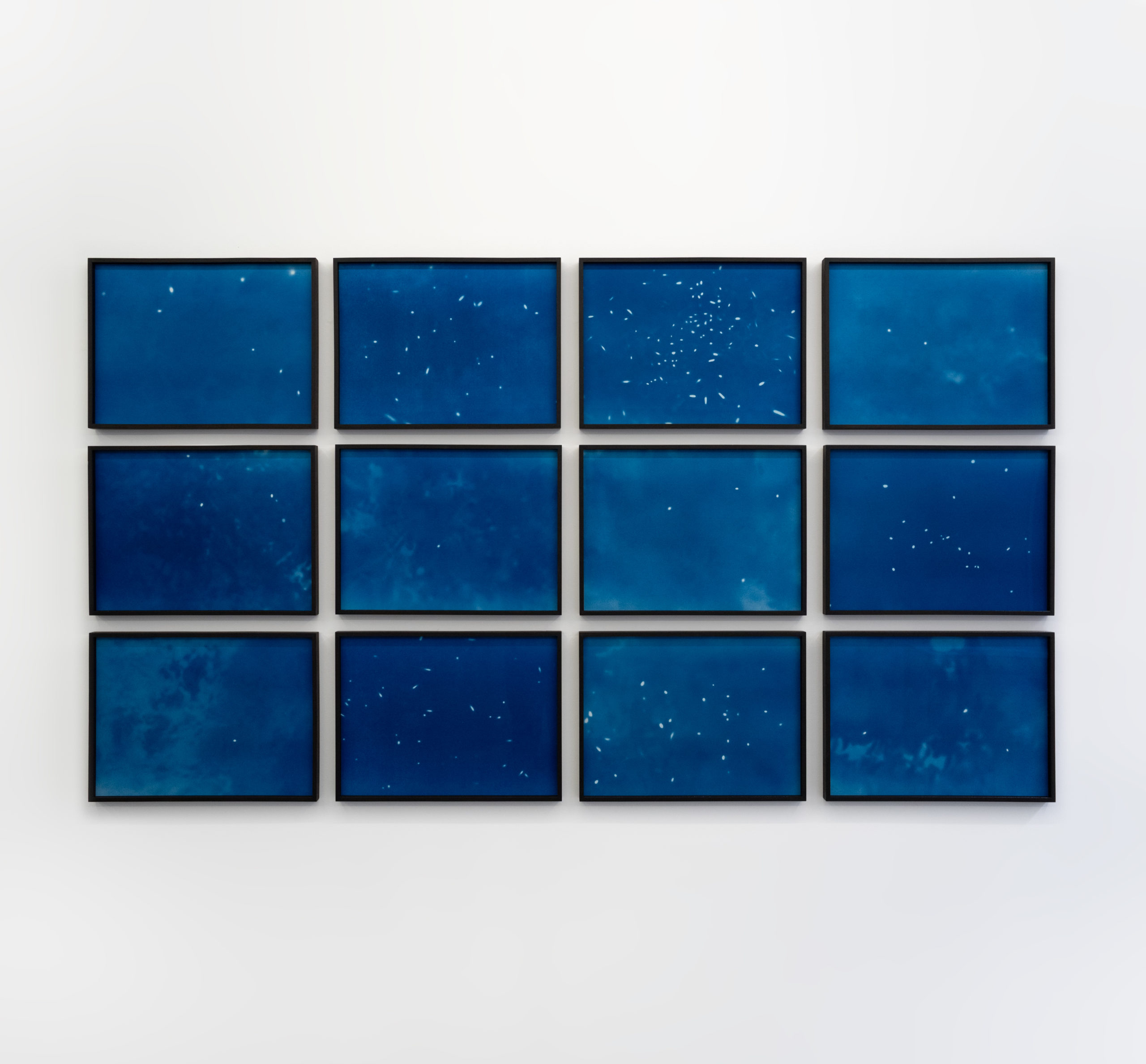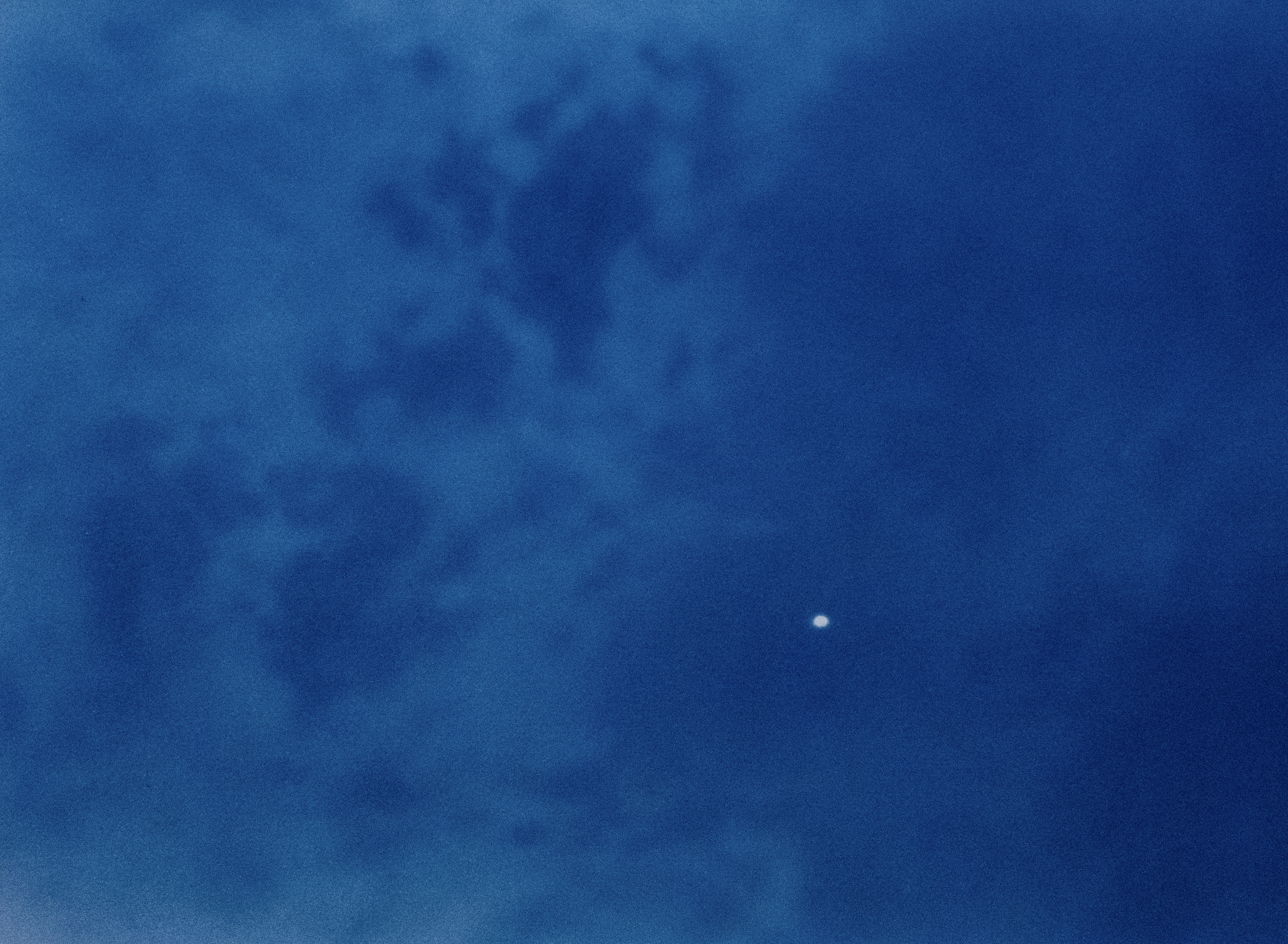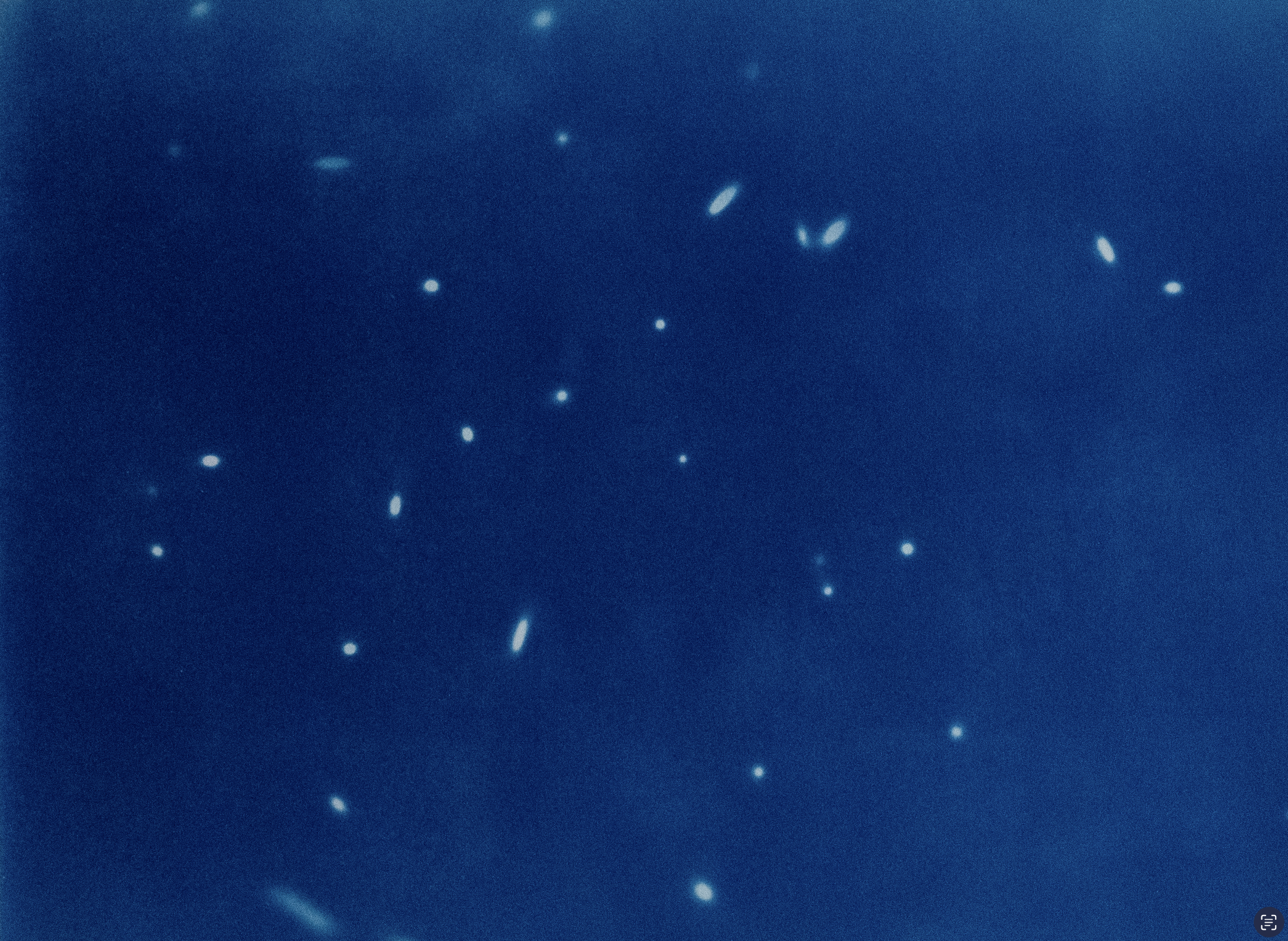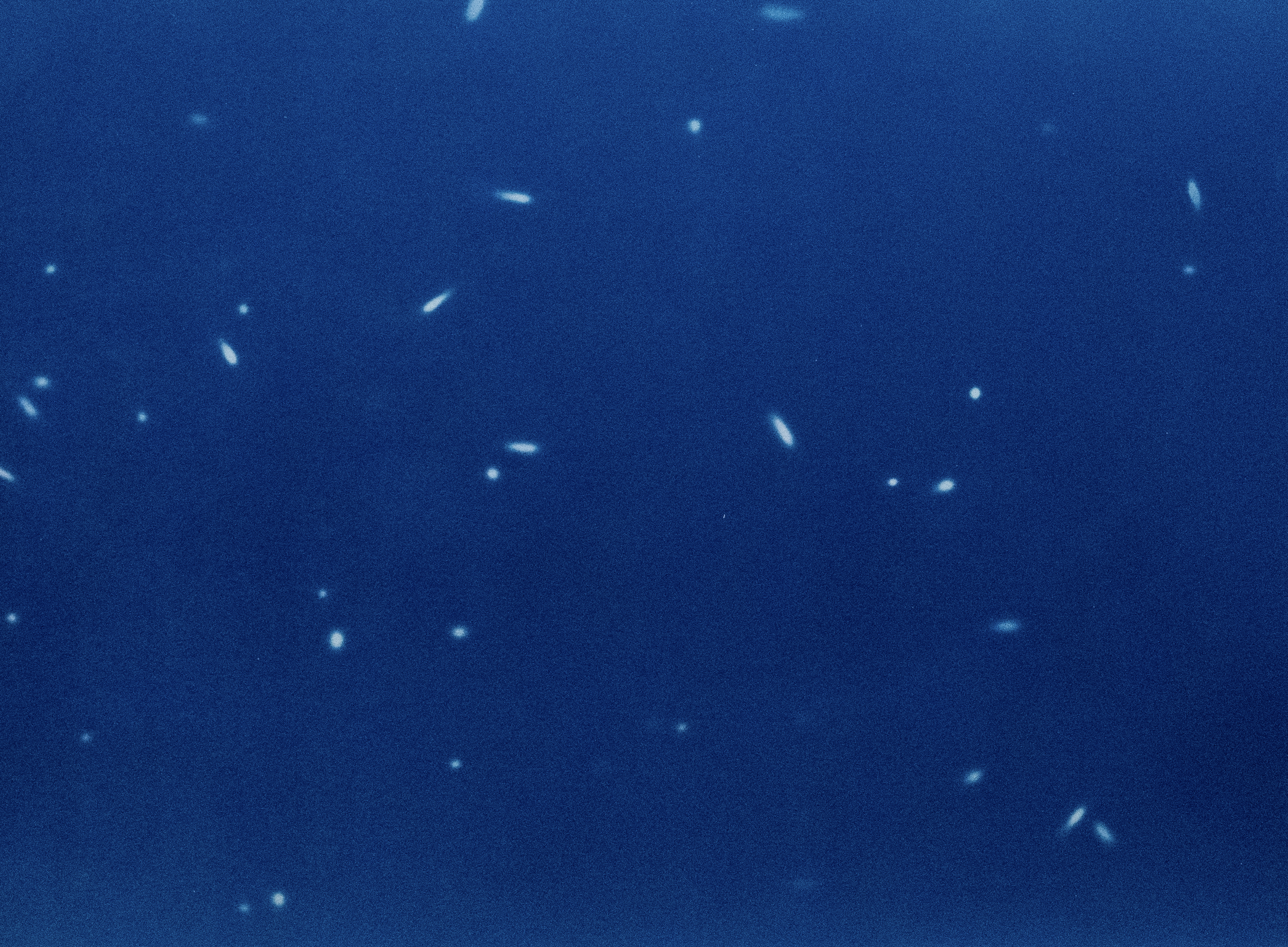TERRESTRIAL LIGHT
2023
Since the emergence of the first particle, matter assembles itself thanks to light, forming increasingly complex objects, stars, galaxies, thus generating ever more light. Light is what links us to the cosmos, bringing us informations, from the origin of the known universe to the appearance of life. It turns out that life itself is among the most luminous objects the universe has produced. This idea, developed and calculated by the astrophysicist David Elbaz in his book “La plus belle ruse de la lumière” (“The most beautiful trick of light”) is at the origin of the “terrestrial light” series. In this series of photography, we can distinguish a multitude of bright dots distributed in space like the constellations of a starry night. But these light sources are much closer to us, on earth. This is the thermal signature of bees. The heat they emit radiates as infrared light and is then captured by a thermal camera. Using the cyanotype technique developed by astronomer William Herschel in 1842 to print these photos, the invisible light from the bees’ heat is made visible by the daylight needed for the cyanotype to reveal itself.
Human genius is sending increasingly sophisticated telescopes equipped with infrared cameras into deep space to observe extremely distant celestial objects, often invisible, moving away from us due to the expansion of the universe. In this series, the same infrared cameras are used to look this time in our close environment, objects which far from being invisible are however gradually disappearing from the field of our collective attention. This series marks a turning point in the work I was doing until now by introducing living being, while keeping exploring light. But this time, terrestrial light.




